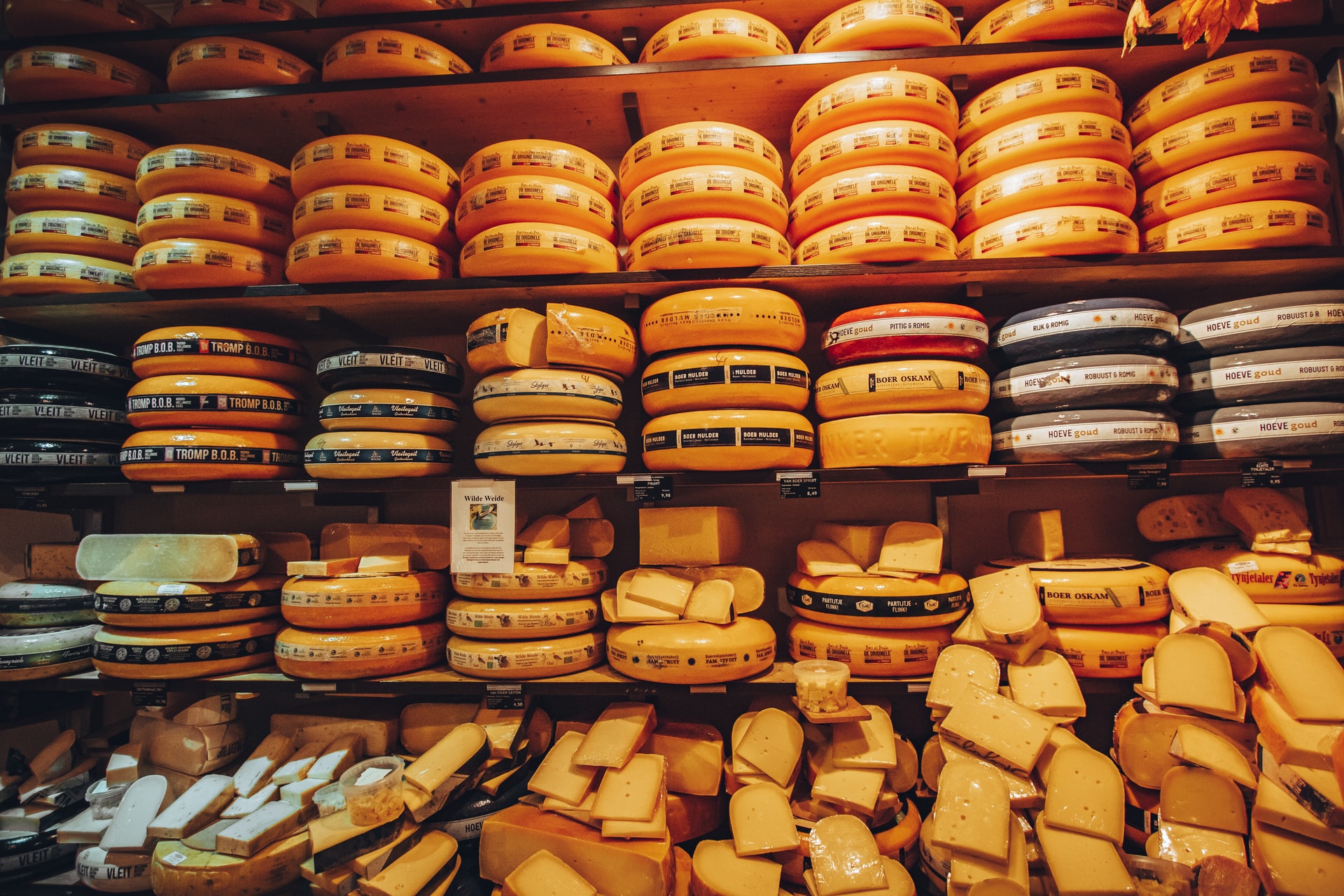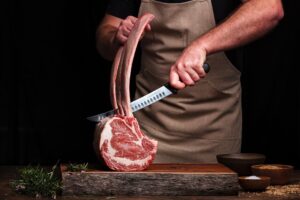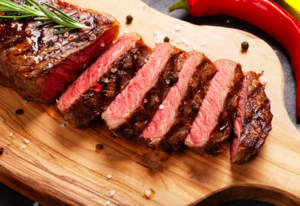Cheese is unbeatable. Yet, it is also dizzying as there are innumerable types of cheese to learn. But no worries. We’ve made a complete guide of cheese from factors to categorize cheese to 20+ types of cheese. Let’s dive in!
(Do not miss the discount at the end of the article!)
(Reminder: this is a very long article and make a good use of the table of content :D)
Table of Contents
What Is Cheese Made?
Before diving into the list of types of cheese, you need to know the principle of cheesemaking.
The basic ingredients of cheese are super simple: milk + coagulant.
A. Milk
There are many types of milk which create different types of cheese. Generally, cheesemakers use the following four types of milk:
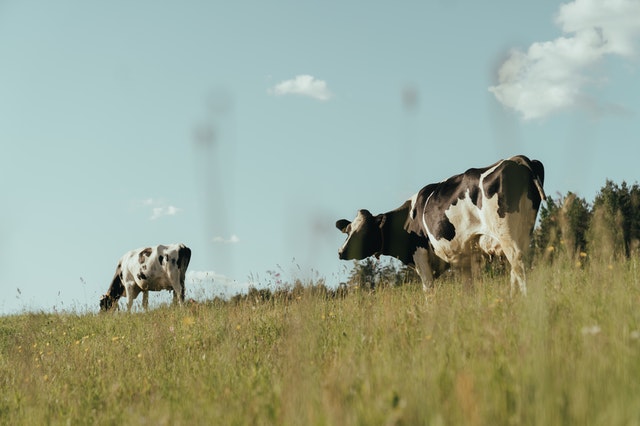
1. Cow Milk
It is widely available and therefore most of the cheeses are made from cow milk.
2. Goat Milk
Goat cheese has a more intense flavor and so somebody may not love it. But it has a lot of fans who are enthusiastic about its remarkable taste.
► Read More: What Is Goat Cheese? Is It a Dairy? | FAQs of Goat Cheese
► Read More: 13 Types of Goat Cheese Recommended (Don’t Miss It!)
3. Sheep Milk
It is not the type of milk that is commonly used to direct drinking but for making cheeses.
4. Buffalo Milk
Buffalo cheese seems not as typical as cow cheese. But actually you must have heard of it before, Mozzarella is the representative.
Other than these types of milk, horse, yak and camel milk are used to make cheese in some regions as well.
B. Coagulant
Coagulant is the magic substance that turns milk into cheese, it can be an enzyme or acid. Most of the traditional cheeses from Europe use both rennet and acid. Both of them can curdle milk and separate it from whey.
The main difference is that cheeses coagulated by acid only are mainly fresh cheese. This is because this method needs a great amount of acid to clot milk and the bacteria cannot survive under that acidity, and hence the cheese cannot be aged.
How Cheese Is Made?
Different types of cheese have different steps of processing, but they share certain basic steps as below.
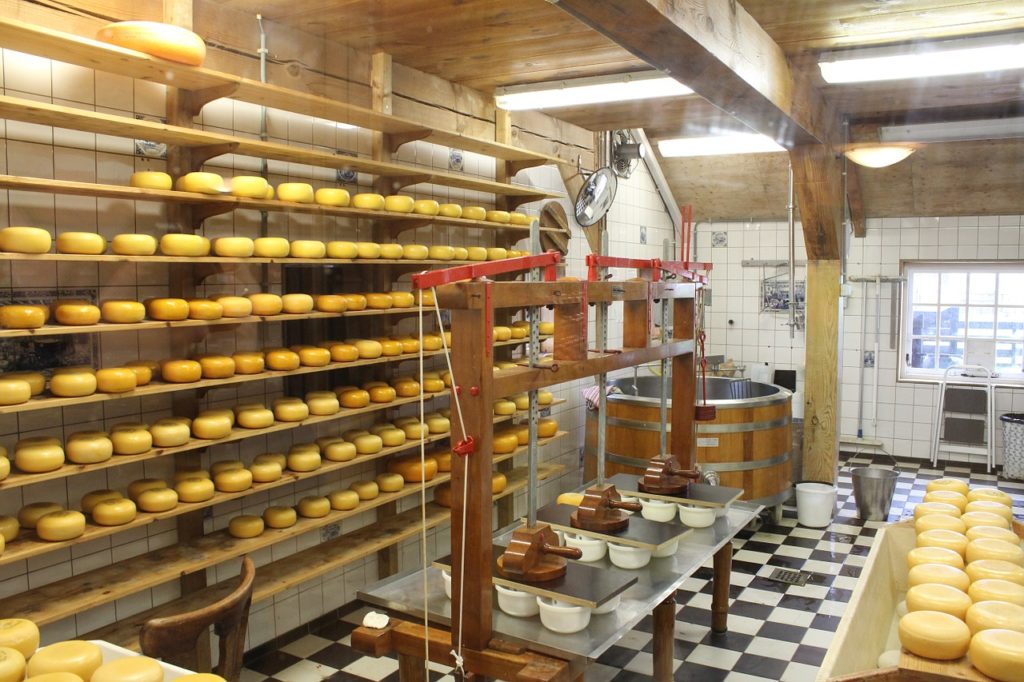
1. Preparing Milk
The cheesemaker will pick a suitable type of milk and may pasteurize.
2. Acidifying the Milk
Adding specific cultures to the milk and fermentation then occurs. As a result, the milk is more acidic.
3. Curdling the Milk
The cheese that is coagulated by solely acid needs to add more acid. On the other hand, other cheeses require rennet to clot. Curd is then created.
4. Separating Curds and Whey
Whey is the liquid remaining apart from curd which is not used for making cheese. (Yet, there is a special kind of cheese made from whey which will be discussed below). Therefore, the cheesemaker will separate the curds from whey. The harder cheese requires further draining of whey.
5. Salting
The artisan may salt the cheese at any time of cheesemaking. They may rub the cheese with dry salt, or store in brine (e.g. Feta Cheese). The amount of salt can determine the flavor and texture of the cheese.
6. Shaping
The cheesemakers shape the cheese in gauze, basket, cloth bag or mold.
7. Aging
Some cheeses are aged. The aging period ranges from several days to years.
► For a more detailed guide of cheesemaking, check this post.
7 Factors to Categorize Cheeses
Here comes a million dollar question: how many types of cheese are there? The answer is countless. A slight difference in processing cheese can cause a big difference, and thus there are billions of types of cheese worldwide. And even bunches of ways to classify cheeses.
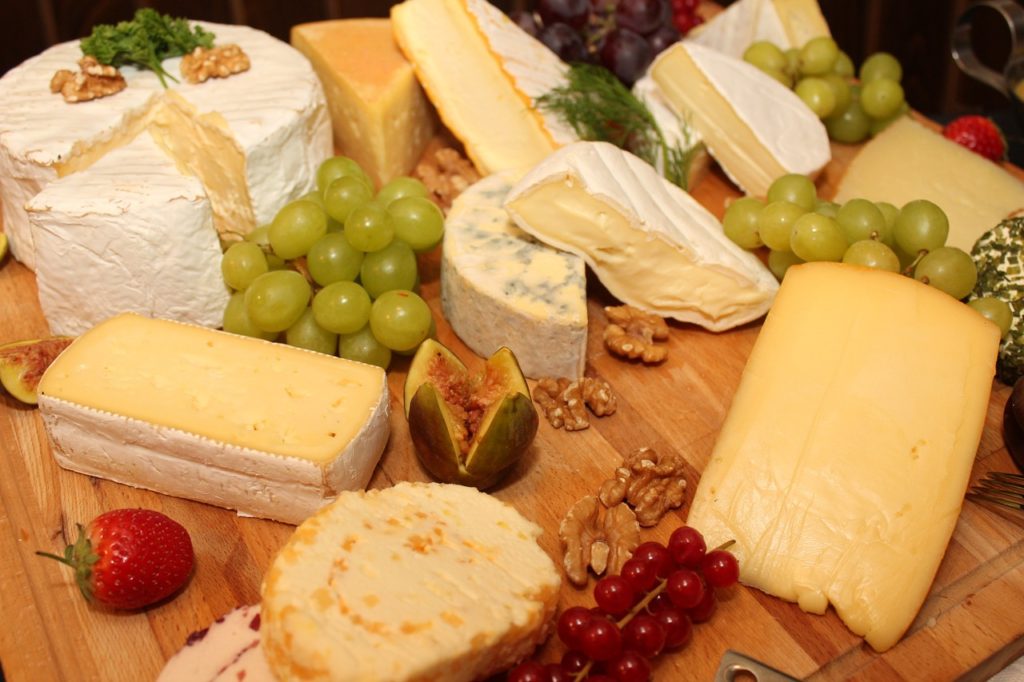
Cheese can be categorized by:
1. Milk
As mentioned in the above, there are various types of milk to make cheese such as milk of cow, goat and sheep. Some cheeses are made from a combination of different milks. For instance, making Greek Feta cheese uses goat and sheep milk.
2. Coagulant
Which kind of coagulant is used is also an important factor for cheesemaking. Acid-set cheese refers to cheeses that are curdled by adding acid while Rennet cheese is cheeses that are coagulated by enzymes. The former are generally fresh cheeses and almost all ripened cheeses belong to the latter.
3. Origin
Cheeses originating from the same region may share some similar characteristics. Let’s take Swiss cheese as an example. They are firm but elastic, their taste tends to be acidic or salty but not sharp, and often being melted in cooking as they are gooey and stretchy. However, cheeses that come from the same country can be diverse as well, just like Italian cheese, how miscellaneous!
4. Aging Time
Aging time can be a notable factor to the texture and flavor of cheese. Fresh cheese refers to the cheese that is not aged which is typically soft and mild in flavor. In most cases, the longer the aging time, the harder the texture and the sharper the flavor of cheeses. Sometimes the experts call them fresh, young and old cheese.
5. Texture
This is the most common way to categorize cheeses. Texture of cheese ranging from soft to semi-soft and semi-hard to hard.
6. Flavor
Apart from the length of aging, mold, bacteria, smoking process, and extra flavorings like truffles can alter the flavor too.
7. Processing Methods
Cheeses can be sorted by different processing methods. The following are some of the examples:
a. Unripened
This is another name for fresh cheese literally. They are not aged and consumed fresh.
b. Bacteria-ripened
The cheesemakers ripening (or aging) the cheeses by bacteria or mold. Cheddar, Swiss, and Parmesan are some examples of bacteria-ripened cheeses.
c. Smear-ripened
It is also called Washed-Rind Cheese. To produce this type of cheese, the makers will regularly “wash” the cheeses with brine or alcohol like beer, wine and brandy. The idea is to create a damp environment for a variety of bacteria to grow. Consequently, these cheeses are usually in reddish color with a stronger flavor, and a stinky, pungent smell.
d. Mold-ripened
Alternatively, the producers may introduce mold cultures during the process. Brie, Camembert (white mold cheese) and Blue cheese are the famous mold-ripened cheeses.
e. Pasta filata
It is a pulled-curd technique of cheesemaking. The fresh curds are stretched and kneaded in hot water during manufacturing which produces a stringy, fibrous and elastic texture. Mozzarella and Provolone are the classics.
f. Brined
This is simple as its name tells you everything. The cheeses are pickled and matured in saltwater (brine) which inhibits bacterial growth. Feta Cheese is the most familiar one. Washed-rind cheese does not belong to brined cheese because it is not matured in brine.

To sum up, cheese can be categorized by many factors and some are overlapping which makes classification very complicated. Therefore, we are going to list out the 23 common types of cheese with a profile one by one. Do not miss the summary chart at the end of this article. Let’s go!
23 Different Types of Cheese
1. Cottage Cheese
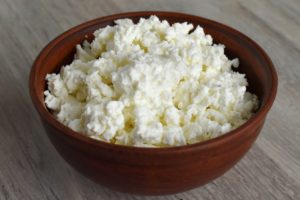
Milk Type: Cow
Coagulant: Acid
Fresh or Aged: Fresh
Country of Origin: Netherlands
What Is Cottage Cheese?
Cottage Cheese is a fresh cheese that is not aged. It is made from cheese curds and whey. The milk is curdled by adding acid, and is not pressed so more whey remains, that’s why it is loose and moist. Because Cottage Cheese contains a great amount of water and is not as concentrated as those aged cheeses, it is white and tastes mild with slightly sour. Also, it is much lower in calories which make it a great food for dieters just like yogurt.
Characteristics of Cottage Cheese
- Loose and Moist
- Mild
- Slightly Sour
- Low Calories
How to Enjoy Cottage Cheese?
Cottage Cheese is a healthy substitute for mayonnaise and other sauces that contain high fat. It is suitable to add on salad, fruit, bread, taco and pancake.
2. Ricotta Cheese
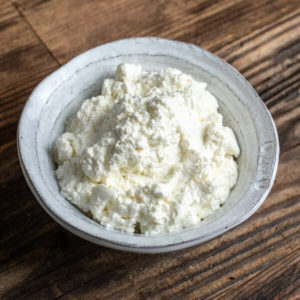
Milk Type: Cow / Goat / Sheep / Italian Water Buffalo
Fresh or Aged: Fresh / Aged
Aging Time: 0-1 year
Texture: Soft for Fresh; Semi-soft for Aged
Country of Origin: Italy
What Is Ricotta Cheese?
Ricotta is an Italian cheese which is made from remaining whey from the production of other cheeses (traditionally mozzarella and provolone cheese). That is to say, Ricotta Cheese can be made from cow, goat, sheep or buffalo milk depending on which cheese is by-producing the whey. During the cheesemaking process, the whey is taken when the milk is first heated and before adding acid.
This type of cheese is creamy white, contains a lot of water, and tastes slightly sweet. The fat content varies from what milk is used, but on the whole, it is light. The fresh Ricotta is highly perishable, on the other hand, shelf life of the aged one is much longer.
Characteristics of Ricotta Cheese
- Highly Moist
- Fluffy
- Slightly Sweet
- Low Fat
How to Enjoy Ricotta Cheese?
Similar to Mascarpone, Ricotta Cheese seems to be tailor-made for making dessert. It is extremely versatile and delivers delicious results on Italian desserts like cheesecakes, cannoli and cookies. It can be a sauce thickener in mayonnaise and other sauces as well.
3. Mozzarella
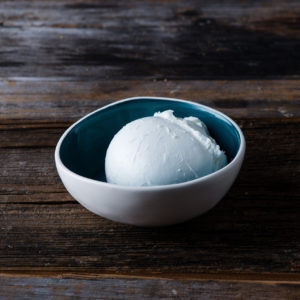
Coagulant: Rennet
Fresh or Aged: Usually Fresh
Texture: Semi-soft
Country of Origin: Southern Italy
What Is Mozzarella?
Mozzarella is a cheese that is traditionally made from buffalo milk and is milky white in color. Yet, some are made from cow milk nowadays.
It contains a great amount of water and is soft. Hence, it is easy to shape and the cheesemakers usually make it as a dough shape. Mozzarella is smooth and chewy which tastes mild, slightly sour with a bit sweet. What’s more, its stretchy and stringy feature makes it one of the best types of cheese on pizza.
The shelf life of Fresh Mozzarella (without aging) is very short which is just around a week. While the Smoked Mozzarella is relatively preservable and able to be kept for 28 days.
Characteristics of Mozzarella
- Stretchy and Stringy
- Mild Flavor
- Slightly Sour with a bit Sweet
How to Enjoy Mozzarella?
Caprese salad is a must-try dish with mozzarella. It consists of sliced fresh mozzarella, tomatoes, and sweet basil with some salt and olive oil. And thanks to its stretchy characteristics, it is perfect on pizza and portobello mushroom. Fried mozzarella is great too.
4. Burrata Cheese
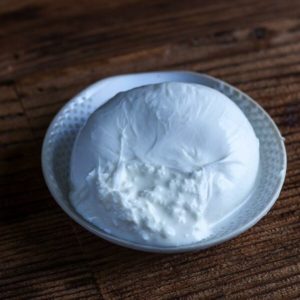
Milk Type: Cow / Buffalo
Coagulant: Rennet
Texture: Semi-soft
Country of Origin: Italy
What Is Burrata Cheese?
Burrata looks very similar to Mozzarella. Both are in a ball shape, but if you look carefully, Burrata looks more like a small bag. In fact, it is indeed the relative of mozzarella.
To make Burrata, the artisans will form a pouch when the cheese is still hot. Next, they will fill with the scraps of leftover Mozzarella and fresh cream. As a result, the outer layer of Burrata cheese is elastic while the center is moist and smooth. It is creamier and more mellow in flavor than mozzarella.
Characteristics of Burrata Cheese
- Elastic Outer Layer
- Moist and Smooth Center
- Salty but mildly Sweet
- Creamier and Richer than Mozzarella
How to Enjoy Burrata Cheese?
Cutting Burrata is a funny job because the mixture of Mozzarella and fresh cream will leak out slowly. It is great to serve with tomato, lettuce, peach and ham. Moreover, it can replace mozzarella on pizza.
5. Stracciatella
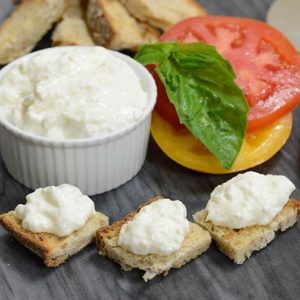
Milk Type: Cow / Buffalo
Coagulant: Rennet
Texture: Soft
Country of Origin: Italy
What Is Stracciatella?
Stracciatella refers to “little rags” in Italian. It is actually the stuffing in Burrata, in other words, it is a mixture of scraps of Mozzarella and cream. Making Stracciatella, the curds are stretched and shredded, then are soaked in heavy cream.
Rich, milky, creamy, soft, and salty are the keywords of Stracciatella. It typically follows with a mildly sweet finish.
Characteristics of Stracciatella
- Rich, Milky, Creamy
- Soft
- Salty with a bit sweetness
How to Enjoy Stracciatella?
Since Stracciatella is soft, thick and creamy, it is excellent to be spread on bread like butter and cream. It is even better to add some tomato slices on the crusty slice of bread.
6. Provolone Cheese
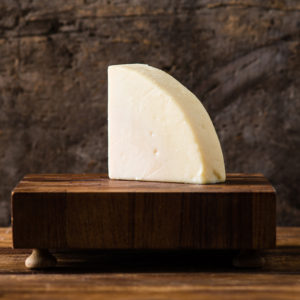
Milk Type: Cow
Coagulant: Rennet
Fresh or Aged: Aged
Aging Time: At least 4 months
Texture: Semi-hard
Country of Origin: Italy
What Is Provolone Cheese?
Provolone is quite similar to Mozzarella. This is because they are both pasta filata which means their curds are stretched during the cheesemaking process. And this makes Provolone as stringy and stretchy as mozzarella.
But the difference is ripened or not. Typical mozzarella is fresh while provolone is aged for a minimum of 4 months. As a result, it is not as mild as mozzarella. Provolone is sharp, tangy and fairly hard. The older the provolone tastes even sharper and harder. If you are a diehard fan of Provolone, opt for the whole wheel.
Characteristics of Provolone Cheese
- Stringy and Stretchy
- Fairly Hard
- Sharp and Tangy
How to Enjoy Provolone Cheese?
Provolone Cheese tastes amazing when cut into thin slices and sandwiched in sandwiches or burgers.
7. Brie Cheese

Milk Type: Cow
Coagulant: Rennet
Fresh or Aged: Aged
Aging Time: Typically 5-6 weeks
Texture: Soft
Country of Origin: France
What Is Brie Cheese?
Brie Cheese is named after its origin—Brie, a French region. It has an oblate wheel shape with a rind of white mold. The rind is edible which provides a unique aroma of mold. On the other hand, the cheese inside is soft, thick, creamy and mild in flavor with a tinge of sour. Thanks to its mild taste, it is highly favored by the French and even the royal family. Thus, it got another name: The Queen of Cheeses.
Characteristics of Brie Cheese
- Soft
- Creamy
- Mild in Flavor
- White Moldy Rind
How to Enjoy Brie Cheese?
Brie is amazing with bread, sandwiches and crackers. You may also eat with some dried fruit such as dried apricot. It is excellent to eat on its own as well.
8. Camembert

Milk Type: Cow
Coagulant: Rennet
Fresh or Aged: Aged
Aging Time: More than 3 weeks
Texture: Soft
Country of Origin: France
What Is Camembert?
Camembert comes from a village with the same name in Normandy, France. It is always compared with Brie Cheese in terms of look, taste and texture. Camembert
is also soft and creamy with an edible white mold rind. Their look and texture are quite similar but for the flavor, Camembert is more intense with deeper earthy hints. The fans of Camembert usually describe it as milky and mushroomy.
Characteristics of Camembert
- Soft
- Creamy
- Milky and Mushroomy
- White Moldy Rind
How to Enjoy Camembert?
It is wonderful to enjoy Camembert Cheese with low tannin red wine. Or you can spread it on bread which is also perfect!
9. Comté Cheese
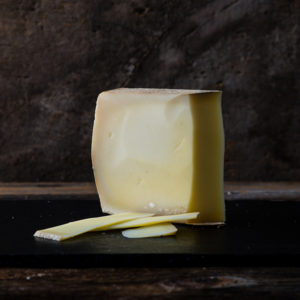
Milk Type: Cow
Coagulant: Rennet
Fresh or Aged: Aged
Aging Time: 4-36 months
Texture: Semi-hard
Country of Origin: France
What Is Comté Cheese?
Comté is one of the classic types of cheese from France. Its rind is generally dusty-brown in color while the inside is pale yellow. It has a tangy fruity aroma with a hint of nutty flavor along with chewing. The texture is fairly hard but flexible. Comté is a good choice for fondue since it melts nicely.
Because the taste of Comté is mild, it is widely accepted. Almost every family in France does have this classic cheese at home. Also, you can always see it on the cheese platter.
Characteristics of Comté Cheese
- Fruity and Nutty
- Mild in Flavor
- Fairly Hard but Flexible
How to Enjoy Comté Cheese?
To enjoy Comté Cheese, simply cut it into long strips and eat directly. Alternatively, you can match it with crackers, bread or wine.
10. Gouda Cheese

Milk Type: Cow
Coagulant: Rennet
Fresh or Aged: Aged
Aging Time: 1-36 months
Texture: Semi-hard to Hard
Country of Origin: Netherlands
What Is Gouda Cheese?
Gouda is probably the most famous cheese from the Netherlands. This Dutch cheese has a lot of varieties according to the aging time, texture, and extra flavorings. The minimum aging time is a month while its texture can be semi-hard to hard. Some cheesemakers add truffle, fennel or a smoking smell by smoking.
Young Gouda is quite soft and pliable which tastes mild with the aroma of walnut and peanut. On the other hand, old Gouda is bold in flavor with a hard and crumbly texture.
Characteristics of Gouda Cheese
- Young: Mild, Soft and Pliable
- Old: Bold, Hard and Crumbly
How to Enjoy Gouda Cheese?
Young Gouda is great to snack with fruit, bread, tea or beer. And old Gouda is pleasant to be on the cheese board. It goes well with other types of cheese and wine or coffee. In winter, enjoying the old Gouda with whiskey or brandy is amazing as well.
11. Raclette Cheese
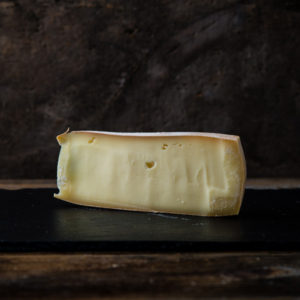
Milk Type: Cow
Coagulant: Rennet
Fresh or Aged: Aged
Aging Time: 2-3 months
Texture: Semi-hard
Country of Origin: Switzerland
What Is Raclette Cheese?
Raclette comes from the Romandy and the regions near France in Switzerland. Its name derives from a French word “racler” which means “to scrape”. It discloses its feature—smooth and easy to melt—and so people typically melt it for dishes.
“Raclette” also refers to a traditional Swiss dish that is to melt the cheese and scrape over a variety of ingredients like hot potatoes. The melted Raclette Cheese adds some nutty aroma to dishes.
Characteristics of Raclette Cheese
- Smooth
- Easy to Melt
- Nutty
How to Enjoy Raclette Cheese?
The traditional way is to hold a half-wheel of Raclette Cheese and melt it with special apparatuses. But to taste a small portion at home, a nonstick frying pan is more than enough. Next, scrape off the melted cheese over the ingredients you love and enjoy. Potatoes, broccoli, ham, baguette, nachos or even chips, just follow your heart!
12. Emmental Cheese
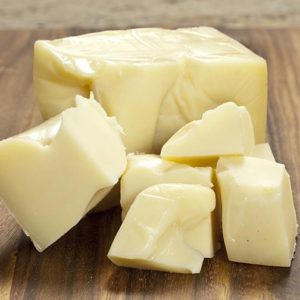
Milk Type: Cow
Coagulant: Rennet
Fresh or Aged: Aged
Aging Time: 2-18 months
Texture: Semi-hard
Country of Origin: Switzerland
What Is Emmental Cheese?
Emmental (also called Emmentaler or Emmenthal) probably is the most recognizable Swiss cheese. It is the prototype of classic cartoon cheese which is yellow and riddled with holes. The holes, or sometimes named as eyes, are created by bacteria fermentation and the presence of small hay particles. Nowadays, since the industrial milking systems are fully-automated and the milk becomes clean without small hay particles, the number of holes declines. The cheeses without eyes are known as “blind”.
This type of cheese is savory but mild with a sweet, fruity and pungent flavor. It is firm but pliable, and ideal as a fondue cheese thanks to its easy melting feature.
Characteristics of Emmental Cheese
- Savory
- Mild
- Sweet, Fruity and Pungent
- Firm and Pliable
- Easy to Melt
How to Enjoy Emmental Cheese?
Doubtlessly, Emmental is the best cheese for fondue with Gruyère, another Swiss cheese with similar characteristics.
13. Gruyère Cheese
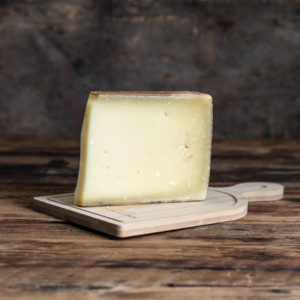
Milk Type: Cow
Coagulant: Rennet
Fresh or Aged: Aged
Aging Time: 5-14 months
Texture: Hard
Country of Origin: Switzerland
What Is Gruyère Cheese?
Gruyère is categorized as a Swiss-type or Alpine cheese. It is firm and pliable, sweet but a bit salty. The age is an essential factor for its taste and texture, young Gruyère is creamy and nutty while the mature one is earthy and tends to be slightly grainy.
It is one of the fantastic melting and grilling types of cheese. Because it is easy to melt and its taste does not overwhelm the main character.
Characteristics of Gruyère Cheese
- Firm and Pliable
- Sweet but slightly Salty
- Good for Melting
How to Enjoy Gruyère Cheese?
Gruyère Cheese is fabulous for baking, melting and grilling, Emmental is the perfect partner for fondue. Moreover, the chefs always select this cheese for French onion soup.
14. Fontina Cheese

Milk Type: Cow
Coagulant: Rennet
Fresh or Aged: Aged
Aging Time: At least 3 months
Texture: Semi-soft to Hard
Country of Origin: Italy
What Is Fontina Cheese?
Fontina Cheese originates from the Aosta Valley, Italy. And then spread over to other regions of Italy, as well as France, Sweden, Denmark and the US.
It is semi-soft to hard, and mild to medium-sharp depending on the length of aging. The older the cheese, the harder the texture and the sharper the flavor. Basically, Fontina from other regions than Aosta Valley tastes milder and softer. Fans often use creamy, earthy, mushroomy and woody to describe Fontina.
Characteristics of Fontina Cheese
- Creamy
- Earthy, Mushroomy, Woody
- Younger: Taste Milder and Softer
How to Enjoy Fontina Cheese?
Fonduta alla valdostana is a kind of fondue that combines Fontina cheese, egg yolks, milk and flour, sometimes plus white truffle shavings. Just mix and heat these ingredients until creamy and dense. And then dip the diced, toasted bread into the creamy fondue with a spoon. Yummy!
15. Feta Cheese
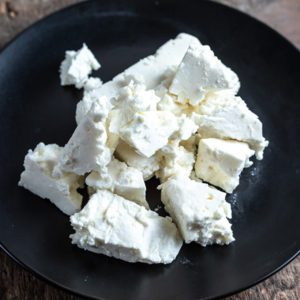
Milk Type: Sheep / Sheep+Goat
Coagulant: Rennet
Fresh or Aged: Aged
Aging Time: At least 3 months
Texture: Soft to Firm
Country of Origin: Greece
What Is Feta Cheese?
Feta is the most renowned Greek cheese which is matured in brine. It is made from sheep milk only or a combination of sheep and goat milk traditionally, but some are produced using cow milk nowadays. Yet, Feta Cheese is registered as Protected Designation of Origin (PDO). Only the Feta produced in a traditional way in specific regions, and using sheep milk or a mixture of sheep and goat milk, can be called Feta.
This Greek cheese is soft or firm according to varieties. In general, it is white and sometimes with small holes, compact but crumbly and a bit grainy in texture, and tastes tangy and salty. Because it is aged in brine, it doesn’t have skin.
Characteristics of Feta Cheese
- Compact but Crumbly
- Tangy
- Salty
How to Enjoy Feta Cheese?
Feta Cheese is terrific on salad. Or it is good to be used in cooking which can partially replace salt since it provides the milky aroma and saltiness at the same time.
16. Cheddar Cheese
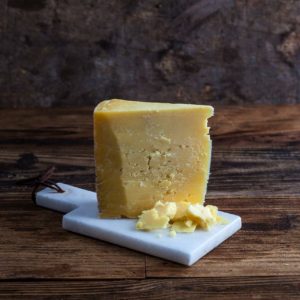
Milk Type: Cow
Coagulant: Rennet
Fresh or Aged: Aged
Aging Time: 3-24 months
Texture: Hard
Country of Origin: United Kingdom
What Is Cheddar Cheese?
Cheddar Cheese is probably one of the most famous types of cheese in England and the world as well. It hails from Southwest England. Cheddar is always shaped in drum shape and some are in its signature orange color. In fact, the orange color comes from colorings such as annatto but not its natural color; therefore, some cheddar is white or pale yellow too.
The flavor of Cheddar tends to be salty since the cheesemakers flavored it with salt. It is hard and crumbly because the minimal aging time of it is 3 months, and sometimes up to 10 years.
Characteristics of Cheddar Cheese
- Salty
- Smooth
- Hard and Crumbly
- Some are orange in color
How to Enjoy Cheddar Cheese?
Cheddar is perfectly matched with sandwiches, hamburgers and hotdogs. Alternatively, you can try melting it on fries, finger-licking!
17. Mahón Cheese
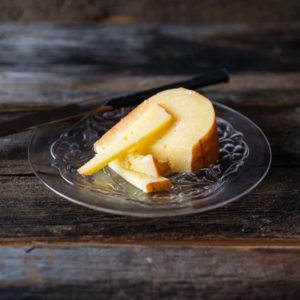
Milk Type: Cow
Coagulant: Rennet
Fresh or Aged: Aged
Aging Time: 3 weeks-2 years or longer
Texture: Soft to Hard
Country of Origin: Spain
What Is Mahón Cheese?
Mahón Cheese is known as the Cheddar of Spain. Similarly, it is hard, crumbly and chewy with an orange rind. The reason for having this signature color is because the artisans rub the rind with butter (or oil) and paprika. And so the tastes of Mahón involve hints of paprika. Besides, it is intense, bold and sharp but slightly salty and aromatic. It is highly complex.
Generally speaking, all aged Mahón cheeses have some small holes.
Characteristics of Mahón Cheese
- Cheddary
- Hard, Crumbly and Chewy
- Intense and Sharp
- With Hints of Paprika
How to Enjoy Mahón Cheese?
Mahón Cheese is suitable to grate over pasta, or pair with a full-bodied wine.
18. Manchego Cheese
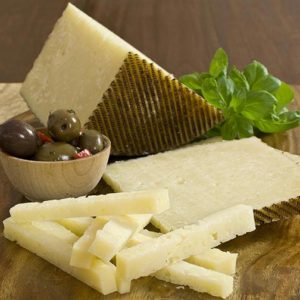
Milk Type: Sheep (Manchega Ewe)
Coagulant: Rennet
Fresh or Aged: Aged
Aging Time: 1-24 months
Texture: Semi-firm to Firm
Country of Origin: Spain
What Is Manchego Cheese?
Manchego is an Ace of Spanish cheeses. It is made from the milk of ewe of the Manchega breed in the La Mancha region of Spain. Therefore, it has an unique and delicate flavor which is creamy and slightly piquant with a distinctive aftertaste of sheep’s milk. The inedible rind is yellow to brownish beige while the cheese can be white or ivory yellow. It is firm, compact and buttery and contains some small air pockets.
Manchego Cheese is protected with Protected Designation of Origin (PDO; or DOP in Spanish) status by the European Union. There are several requirements to be crowned with this label. For example, the milk must be whole milk of Manchega sheep breed from registered farms, and the production must be occured in particular areas. Apart from that, you may see the label of artesano (or artisan) on the Manchego. It implies that the milk is raw and does not pasteurised.
The cheese tastes differently at different stages of aging:
- “Semicurado” refers to the cheese aged 3 weeks to 4 months which is semi-firm and relatively milder.
- “Curado” is a cheese aged 4-6 months, and you can feel the caramel and nutty flavor.
- “Viejo” is cheeses aged 1-2 years that are firm and sharp with deep pepperiness.
Characteristics of Manchego Cheese
- Firm, Compact and Buttery
- Creamy and slightly Piquant
- Distinctive Aftertaste
How to Enjoy Manchego Cheese?
Manchego grates well and is perfect on tapas. You can also pair it with a Rioja Tempranillo or sherry.
19. Parmigiano Reggiano / Parmesan Cheese
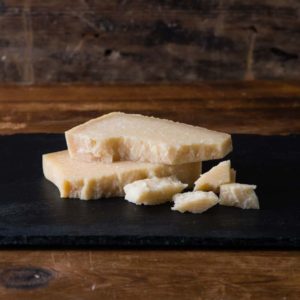
Milk Type: Cow
Coagulant: Rennet
Fresh or Aged: Aged
Aging Time: At least 12 months
Texture: Hard
Country of Origin: Italy
What Is Parmigiano Reggiano?
Parmigiano Reggiano is the icon of the finest cheese. In the European Union, the name “Parmesan” only refers to Parmigiano Reggiano and cannot be used for an imitation version. However, outside the EU, “Parmesan” can be the Italian-style cheeses but not the true Parmigiano Reggiano. So pay attention if you buy outside the EU.
Parmigiano Reggiano is crème de la crème thanks to the strict protection and high quality production. It is granted Protected Designation of Origin (PDO) status which guarantees the cheese is manufactured within designated parts in northern Italy. In other words, buying Parmigiano Reggiano PDO (DOP in Italian) ensures you buy an authentic Parmigiano Reggiano.
The traditional Parmesan Cheese is made from whole milk extracted in the morning and naturally skimmed milk the night before. The milk must be sourced from local cows and they are fed on grass or hay only. And it is aged at least 12 months under strict controls. Every wheel comes with an identification number, the production month and year, and stamps identifying the aging time. These make everything traceable just like many other delicacies. All these strict regulations deliver this five-star “King of Cheeses“.
It is firm and crumbly; deeply savory with fruity and nutty notes. Heaven on a plate!
If your friend is a foodie, why not purchase a gift box of Parmigiano Reggiano for his/her birthday which is as decent as wine?
Characteristics of Parmigiano Reggiano
- Firm and Crumbly
- Rich and Savory
- With Fruity and Nutty Notes
How to Enjoy Parmigiano Reggiano?
Parmigiano Reggiano goes wonderfully with wine. It is also bravo over pasta, casserole and risotto.
20. Grana Padano
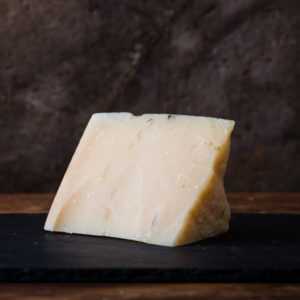
Milk Type: Cow
Coagulant: Rennet
Fresh or Aged: Aged
Aging Time: 9-20 months
Texture: Hard
Country of Origin: Italy
What Is Grana Padano?
Grana Padano is very similar to Parmigiano Reggiano but it is under a less strict production process. Likewise, the milk is a blend of semi-skimmed milk produced in the evening and whole milk collected in the morning.
Generally, Grana Padano is younger than Parmigiano Reggiano with a minimum of 9 months ripening. Owing to the shorter aging time in most cases, it is less savory, crumbly and sharp than Parmesan. Grana Padano has been a PDO product as well and so it’s fire-branded with the trademark if it passes quality tests.
Characteristics of Grana Padano
- Hard and Crumbly
- Savory
- Less Crumbly and Sharp than Parmesan
How to Enjoy Grana Padano?
To enjoy Grana Padano, foodies normally grate it on pasta, plus white truffle, you can’t resist it!
21. Pecorino
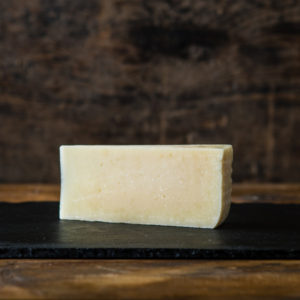
Milk Type: Sheep
Coagulant: Rennet
Fresh or Aged: Aged
Aging Time: Varies from varieties
Texture: Hard
Country of Origin: Italy
What Is Pecorino?
The name “Pecorino” comes from an Italian word “pecora” which means “sheep”. Pecorino cheese refers to Italian sheep cheese and there are several varieties according to different regions and aging time. Pecorino Romano probably is the most renowned outside Italy. Some other examples include Pecorino Toscano, Pecorino Ginepro, Pecorino Locatelli, and Pecorino Marzolino.
Sometimes, you may see other additional words on the label. “Stagionato” means the more matured cheese which has a harder texture and a sharper nutty flavor. On the other hand, “semi-stagionato” and “fresco” refers to the younger cheeses which are softer and milder.
Characteristics of Pecorino
- Hard and Crumbly
- Nutty
How to Enjoy Pecorino?
Pecorino cheese is a more budget friendly choice than Parmigiano Reggiano in pasta with an also-good quality. It can be a nice snack when paired with drizzled with chestnut honey.
22. Mimolette
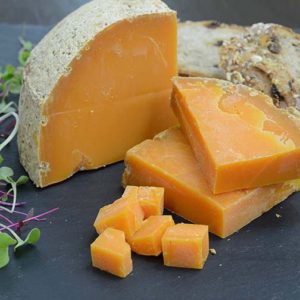
Milk Type: Cow
Coagulant: Rennet
Fresh or Aged: Aged
Aging Time: 2-24 months
Texture: Hard
Country of Origin: France
What Is Mimolette?
Whole Mimolette is in a spherical shape, plus its grey rind and orange inner paste, it looks like a cantaloupe melon.
The cheese makers add cheese mites to the surface and hence the grey rind, this is to enhance the flavor. For the bright orange color of the cheese, it comes from the natural food colorant, annatto, which does not impart any flavor and aroma.
On the whole, Mimolette has a delightful caramelized flavor, but aging affects the taste and texture significantly. Taste of Young Mimolette tends to be like Parmesan while extra-old Mimolette has a hazelnut- and butterscotch-like sweet flavor and hard texture that most people prefer.
Characteristics of Mimolette
- Grey Rind and Orange Cheese
- Caramelized
- Young: tastes like Parmesan
- Extra-old: Hazelnut- and Butterscotch-like Sweet, Hard
How to Enjoy Mimolette?
It is remarkable to slice Mimolette for sandwich and burger, or cube it for cheese board. The caramelized flavor also makes it incredibly snackable, especially with beer.
23. Blue Cheese
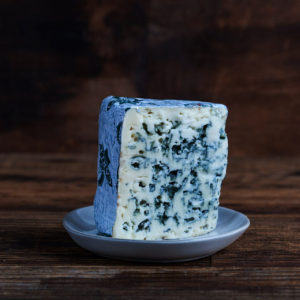
What Is Blue Cheese?
Blue Cheese is a very special cheese. There are different varieties under it and so you can regard it as a big category of cheese. In general, the manufacturing process of blue cheese involves adding mold Penicillium, and aging in a temperature-controlled environment. After fermentation, blue and green spots or veins are formed throughout the cheese, hence the name.
This generates a strong, distinct smell which is not accepted by everyone as some of the smell is similar to human body odors. Also, it imparts a salty and very sharp flavor, blue cheese is not for the people who prefer bland cheese.
The flavor and texture varies from varieties of blue cheeses. Roquefort from France, Stilton from England, and Gorgonzola from Italy are some of the famous blue cheeses.
► Read More: What Is Blue Cheese? How It Is Made? | FAQs of Blue Cheese
Characteristics of Blue Cheese
- Blue and Green Veins
- Strong Smell
- Salty
- Very Sharp Flavor
How to Enjoy Blue Cheese
There are many ways to enjoy blue cheese, for instance, it can be eaten on its own, or melted on a burger.
► Read More: 11 Best Types of Blue Cheese From Mild to Sharp
Summary Chart of Different Types of Cheese
| Types of Cheese | Origin | Milk Type | Aging Time | Texture | Flavor |
| Cottage Cheese | Netherlands | Cow | Fresh | Loose | Mild Slightly Sour |
| Ricotta Cheese | Italy | Cow / Goat / Sheep / Buffalo | 0-1 year | Fresh: Soft Aged: Semi-soft | Slightly Sweet |
| Mozzarella | Italy | Buffalo / Cow | Usually Fresh | Semi-soft Stringy and Stretchy (Pasta Filata) | Mild Slightly Sour with a bit Sweet |
| Burrata | Italy | Cow / Buffalo | Semi-soft | Creamy Rich Salty but mildly Sweet | |
| Stracciatella | Italy | Cow / Buffalo | Soft | Creamy Rich Salty but mildly Sweet | |
| Provolone Cheese | Italy | Cow | > 4 months | Semi-hard Stringy and Stretchy (Pasta Filata) | Sharp and Tangy |
| Brie | France | Cow | Typically 5-6 weeks | Soft | Creamy Mild |
| Camembert | France | Cow | > 3 weeks | Soft | Creamy Milky Mushroomy |
| Comté Cheese | France | Cow | 4-36 months | Semi-hard | Fruity Nutty Mild |
| Gouda | Netherlands | Cow | 1-36 months | Semi-hard to Hard | Young: Mild Old: Bold |
| Raclette Cheese | Switzerland | Cow | 2-3 months | Semi-hard (Easy to Melt) | Nutty |
| Emmental | Switzerland | Cow | 2-18 months | Semi-hard (Easy to Melt) | Savory Mild Sweet Fruity Pungent |
| Gruyère | Switzerland | Cow | 5-14 months | Hard (Easy to Melt) | Sweet but slightly Salty |
| Fontina | Italy | Cow | > 3 months | Semi-soft to Hard | Creamy Earthy Mushroomy Woody |
| Feta | Greece | Sheep / Sheep+Goat | > 3 months | Soft to Firm | Tangy Salty (Brined) |
| Cheddar | United Kingdom | Cow | 3-24 months | Hard | Salty |
| Mahón Cheese | Spain | Cow | 3 weeks-2 years or longer | Soft to Hard | Intense and Sharp With Hints of Paprika |
| Manchego Cheese | Spain | Sheep (Manchega Ewe) | 1-24 months | Semi-firm to Firm | Creamy Slightly Piquant Distinctive Aftertaste |
| Parmigiano Reggiano | Italy | Cow | > 12 month | Hard | Rich Savory With Fruity and Nutty Notes |
| Grana Padano | Italy | Cow | 9-20 months | Hard | Savory |
| Pecorino | Italy | Sheep | Varies from varieties | Hard | Nutty |
| Mimolette | France | Cow | 2-24 months | Hard | Caramelized Young: Similar to Parmesan Extra-old: Hazelnut- and Butterscotch-like Sweet |
| Blue Cheese | – | Varies | From | Varieties | Salty Sharp Strong Smell |
Conclusion
Congrats! You just finished a long guide of 20+ common types of cheese. However, there is still a long way to learn the wonderful cheese world. He that travels far knows much, taste the cheese is far more meaningful than only reading an article. Pick the types you are interested in and try once, if you don’t know where to start, simply choose a cheese collection box. There are some collections exclusively for beer enthusiasts and wine lovers, if you are a member of them, these may be amazing for you!
If you buy on Gourmet Food Store.com, use our unique discount code: KitchenTeller on the Basket page or the Payment page during checkout to enjoy 10% OFF!
If you buy on Di Bruno Bros, click HERE to check the latest discount!
► Read More: 8 Types of Ham You Must Try! | Shopping Tips for Newbies in Ham
► Read More: What Is Salami Made Of? Is It Healthy & Keto? | Salami 101

